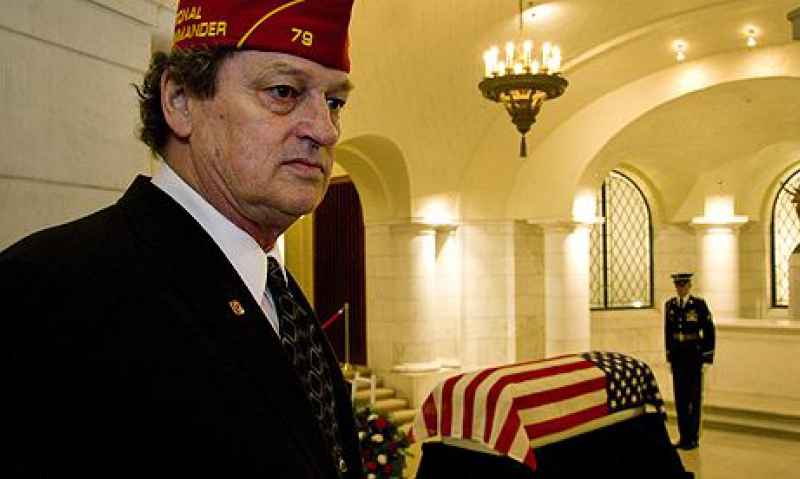
Last U.S doughboy laid to rest
Frank Woodruff Buckles, the last American veteran of World War I, was laid to rest today in Arlington National Cemetery. He passed away Feb. 27 at the age of 110.
Buckles received his final military honors at interment and lay in state at the cemetery. The American Legion rendered its salute with a visit from National Vice Commander Eugene Pytka. Pytka, who had traveled from his home in Rhode Island to pay his respects. Pytka was granted a special privilege by Arlington officials and allowed to stand in a reserved area as he regarded the memory of “the last doughboy.”
Buckles was not a combat veteran. He saw no action in the Great War, but through his remarkable longevity and tenacious advocacy on behalf of his generation of military veterans, he distinguished himself as a symbol of nearly forgotten, but historically significant, American sacrifice.
Buckles was a 13-year-old Missouri farm boy when Archduke Franz Ferdinand of Austria and his wife, Sophie, were shot dead in Sarajevo by a 19-year-old Serbian named Gavrilo Princip. Expected to last just a few months, the ensuing war dragged on without U.S. involvement. But nearly three years after the start, the United States entered the war after British cryptographers deciphered a telegram from German foreign minister Arthur Zimmerman asking Mexico to join the war in exchange for the return of Texas, Arizona and New Mexico.
Sixteen-year-old Frank Buckles joined the rally in August 1917. He was determined to serve. First, he visited a Marine recruiter but was rebuffed for being too young, even though he had lied about his age and said he was 18. He tried the Navy but was told that his arches had fallen too far, though Buckles suspected they, too, thought the skinny farm kid was a bit too fuzzy faced. He carried his claim to be of age to the Army. They either bought it or didn’t care, and Buckles was fitted with the khakis he wanted so badly to wear.
In December, Buckles was shipped out. He sailed aboard the Carpathia, the ship that had plucked Titanic survivors out of the icy Atlantic nearly six years before. He landed in Glasgow, Scotland, and was posted down the island in England.
“While in England,” Buckles recalled, “I drove a Ford ambulance, a motorcycle with sidecar, and a Ford car for visiting dignitaries.” Buckles wanted to go where the action was, however. He asked for a transfer to the continent. At first, he was refused. Then, he said, “I finally got an assignment to escort an officer to France who had been left behind by his original unit. I had various assignments and was at several locations. After Armistice Day, I was assigned to a prisoner-of-war escort company to return prisoners back to Germany.
“After two years with the AEF (American Expeditionary Force), I returned home on the USS Pocahontas in January 1920. I was paid $143.90, including a $60 bonus.”
Though he never saw combat in the Great War, Buckles’ long life was not without wartime adventure. After a little time in the banking business, he was lured back to the sea and got a ship-borne job as an assistant purser. He stayed abroad for many years, serving on a variety of cargo and passenger ships.
Then, he said, “In 1940, I accepted an assignment to expedite the movement of cargoes for the American President Lines in Manila. Unfortunately for me, my stay was extended by the Japanese invasion of the Philippines in 1941. I spent three and a half years in Japanese prison camps...”
Buckles was rescued in early 1945, came home, got married and settled back to the land as a West Virginia farmer.
In his later years, as his Great War compatriots grew more and more scarce, Buckles spoke on their behalf, advocating for a National World War I Memorial in Washington, D.C., and in his home state of Missouri. In 2008, he went home to his native Missouri where he was honored at the National World War I Museum in Kansas City.
